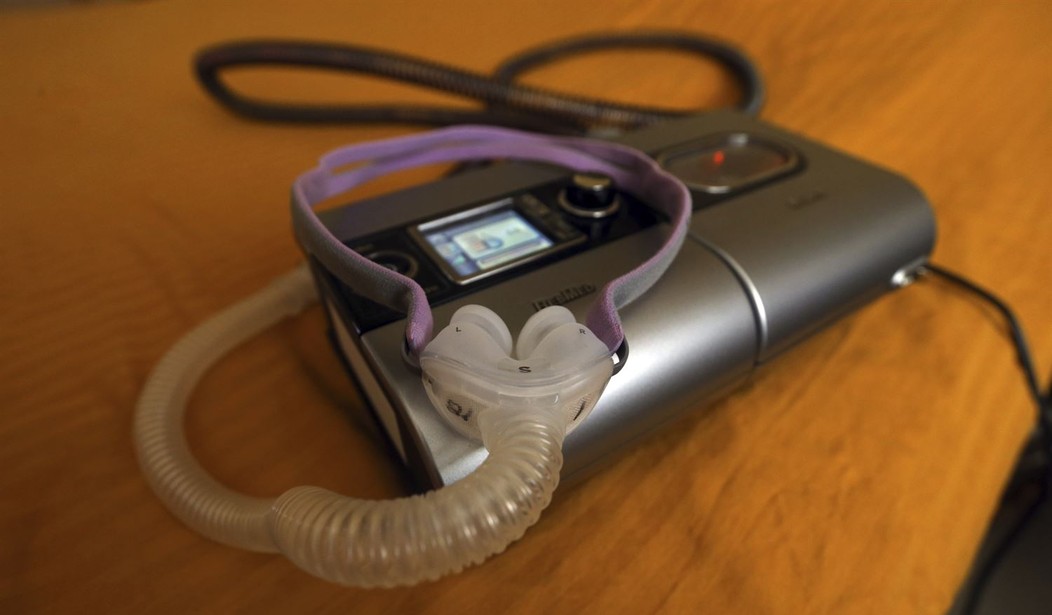Top News
Telemedicine vs traditional care: my CPAP replacement saga

I wasn’t going to write about this, but my wife pushed me to do so. (Yes, an actual female agreed to marry me and we have made it nearly 30 years!).
I have been using CPAP therapy for almost 20 years to treat obstructive sleep apnea. For those unfamiliar, OSA is a very dangerous problem, often though not always related to excess tissue in the mouth and throat and/or excessive relaxation of the muscles at the back of the mouth, blocking the airway.
Sleep apnea is very common, and when severe can cause serious health conditions up to and including death. Heart disease, blood pressure, and even car accidents from sleepiness can be caused by apnea. When I was tested I had an AHI in the 90s, which essentially meant that my breathing was severely impaired, and at the time I was tested I was already unsafe to drive. I have always had trouble breathing when sleeping, being jolted awake many times a night.
So it can be bad. Most people don’t have it that badly, but I have for decades. Hence my CPAP (a machine that forces your airway open and keeps you breathing without obstruction) is literally a lifesaver. On a trip, I once forgot the cord to my CPAP and was unable to sleep much, and woke up constantly. I had to drive 7 hours the next day, as I was in the middle of the trip. My wife paid $90 to overnight the cord.
So when my CPAP started failing I tried to order another CPAP, and couldn’t get a copy of the prescription until I saw one of the doctors at my clinic. Appointments started 4 months out with the specialists. Yikes!
I tried everything to get in, and no dice. And you need a prescription to buy a CPAP, even if you have been using one forever. Them’s the rules. As FDA-approved products, they are prescription only. Worse, if you go through your insurance the costs can be high, as insurance companies often pay much more for durable medical equipment than the cash price you or I would pay. For some reason the insurance companies are price-insensitive, and DMEs can be very customer unfriendly.
So what did I do? I made an appointment with a telemedicine company that specializes in sleep disorders for $69. I saw the doctor the next day, got the prescription in my email about an hour later, and ordered a machine for cash at about the same price as my insurance deductible would be. Insurance won’t deal with the online resellers (who are authorized resellers, so you get a genuine product and not a knockoff), and I am having them ship it overnight.
Traditional medicine with insurance payout: more expensive, takes months, a huge hassle, and no benefit to me. All downsides. I didn’t need to see the doctor because the treatment I have been using is both necessary and working as advertised–I have the statistical proof provided by the machine. There are zero benefits to anybody but the people moving and taking money–none of whom seem very interested in getting me the help I needed in the time frame I needed it. Pure bureaucracy.
Doing everything through private pay and online I got it done in two days.
Obviously, this model doesn’t work for everything, but then again many people’s routine doctor visits a physical examination is not necessary and a waste of time. Expenses and burdens on a stressed healthcare system can be reduced by moving away from the traditional model.
Another reform–suggested to me by my former primary care physician–would be reducing the workload on physicians by having more visits be seen by experienced Registered nurses who can treat common problems no less well than M.D.s. If they hit a roadblock an MD can be available to provide more advanced care or diagnosis for more complicated problems, reducing workload on the insufficient number of PCPs. My doctor, when she retired (early) had a roster of about 1800 patients under her care, as do her colleagues. Using her time for routine sore throats is insane.
Physician assistants already perform a lot of more complicated medical care such as long-term patient management. My cardiologist is a P.A. and I am happier with her than with most of the physicians I have seen. She is intimately familiar with my situation, and my needed care, knows my rather complicated medical issue as well or better than the doctors I have seen, and is much easier to deal with. I chose her over an M.D. I saw and intensely disliked.
The medical system is barreling toward crisis, with too few doctors providing care that is too expensive, a bureaucracy that has eaten up oodles of money with little actual benefit, and a government-run sector that is grossly mismanaged. Hospitals are financially managed incredibly poorly, and every “solution” has been a Rube Goldberg addition to an already complicated system.
Telemedicine is a good addition, but much more needs to be done. Unfortunately, there is so much money at stake that there is little incentive to change things. For the people who run the system, the incentives run the other way.
For me the bottom line is obvious: instead of waiting months and suffering miserably, my problem will be solved relatively affordably and quite quickly. The same should be the case for everybody in my situation, and it shouldn’t take hunting around the Internet to find out I could do it.
Read the full article here

-
Uncategorized7 days ago
The Surge of Crypto Slots: A New Period in Online Pc Gaming
-
Uncategorized7 days ago
Kəşf Etmək Binance Coin Kazino Saytları Dünyasını
-
Uncategorized7 days ago
The Increase of Dogecoin Casino Sites: An Extensive Introduction
-
Uncategorized3 days ago
The Comprehensive Overview to Tutoring Networks
-
Uncategorized7 days ago
High Roller Online Casinos: Inside the Globe of Elite Betting







